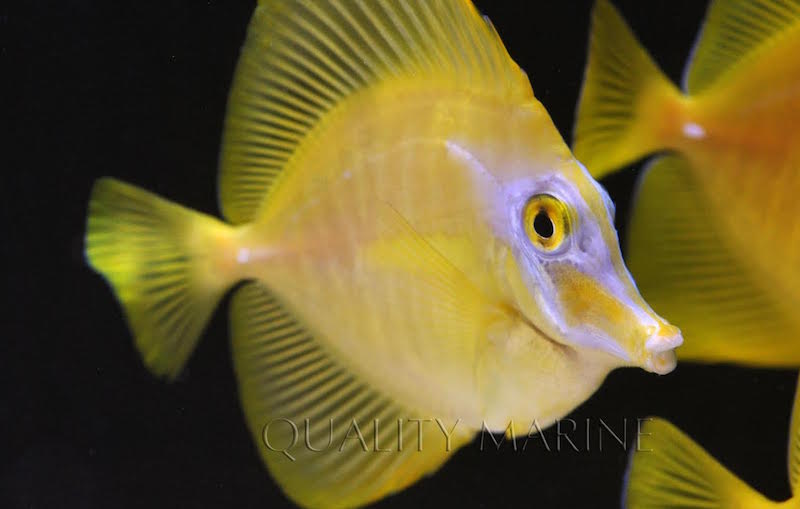The news of successfully captive bred yellow tangs took the aquarium by storm last year. Successfully breeding any species of surgeonfish has been a long time coming, and this week the first batch of captive bred yellow tangs finally made their way into the aquarium trade.
We got word of the worlds’ first captive bred Zebrasoma flavescens being shipped to Quality Marine and Seagrest Farms earlier in the week but took pause to contemplate the condition of these artificially reared yellow tangs. Unfortunately, it seems that nearly all of the captive bred yellow tangs suffer from fairly advanced head and lateral line erosion (HLLE).
The first captive raised clownfish and dottybacks exhibited plenty of deformities and substantially reduced coloration which made them a shadow of what their wild counterpart is supposed to look like. Through decades of trial and error, improvements in rearing techniques and higher quality food, captive bred clownfish and dottybacks have gotten so beautiful and nearly perfect that we’ve nearly forgotten how bad they used to be.

Alas, it looks like the first captive bred yellow tangs also have a long way to go before they could be really considered ‘market ready’. We understand that this is the first ever batch of these captive bred fish, and it is paramount to support captive breeding efforts of all aquarium marine fish, especially a species which is as heavily fished as yellow tangs.
We also understand that the world’s first captive bred yellow tangs would probably come with a few imperfections; we can live with slight anomalies in the body shape, uneven fin outline and even paler coloration. But one defect that we never want to see in any fish in anyone’s aquarium is head and lateral line erosion.
HLLE is the bane of all fish keepers, and it can be quite common and develop quickly, particularly in Zebrasoma surgeonfish, especially those exposed to higher doses of copper, kept in water with activated carbon use, or both. HLLE looks atrocious, like part of the skin has been peeled away and in Zebrasoma it reveals bony regions right under the skin, there’s just nothing worse than seeing a nice yellow tang or purple tang with a big streak of HLLE on its head and sides.

We love yellow tangs, a LOT! A reef tank is not really a reef tank until it has at least one yellow tang in it and nearly every reef we’ve ever owned or worked has had at least one. On the one hand we really really want to support captive breeding efforts, and have no problem shelling out a hundred bucks for a decent captive bred yellow tang.
But on the other hand HLLE in any reef fish is repulsive to us, and the condition has a track record of progressing as the fish ages; sometimes the tissue damaged by HLLE can heal a little bit, filling in the open area with yellow color but the scarring never truly goes away, and this is the rare exception.
So as responsible reef aquarists, what are we to do? Are we overreacting to the HLLE present on these yellow tangs? Would YOU pay $100 for a captive bred yellow tang and put it in your own reef tank? We don’t really have the answer to this tough question but this is one case where your feedback is welcomed and appreciated.




